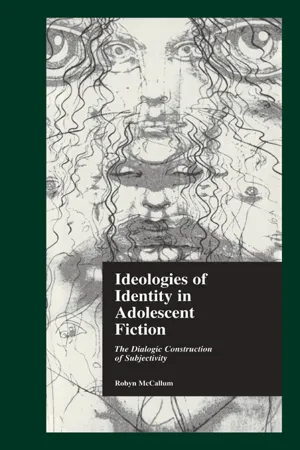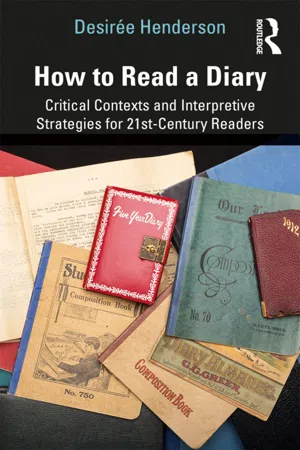Epistolary Fiction
Epistolary fiction is a literary genre that presents the narrative through a series of letters, diary entries, or other written correspondence. This form allows for multiple perspectives, intimate insights into characters' thoughts and emotions, and a sense of immediacy. Notable examples include "Dracula" by Bram Stoker and "Frankenstein" by Mary Shelley.
5 Key excerpts on "Epistolary Fiction"
- eBook - ePub
Stories in Letters - Letters in Stories
Epistolary Liminalities in the Anglophone Canadian Short Story
- Rebekka Schuh(Author)
- 2021(Publication Date)
- De Gruyter(Publisher)
...Part I: Theoretical Considerations 3 The Epistolary Short Story in Canada and Beyond Whenever we come across the terms ‘Epistolary Fiction’ or ‘epistolary genre’, we tend to automatically think of the epistolary novel, although the epistolary novel is just one possible sub-genre of Epistolary Fiction, which has, especially in the course of the epistolary renaissance, been joined by several other epistolary sub-genres. The epistolary short story, or letter story, as I shall call it in this study, is one such sub-genre. Thus, all epistolary stories are also Epistolary Fiction, but not vice versa. While some of the features of epistolary short fiction might hold true also for epistolary novels, the following theoretical and generic premises focus exclusively on the epistolary short story. While it is widely accepted that Epistolary Fiction of the twentieth and twenty-first centuries covers literature “that unfolds through multiple forms of communication that have descended from the letter: e-mails, text messages, telegrams, postcards, tweets, transcribed tapes, greeting cards, answering machine messages, and so on” (Bowers 2009, online), another aspect of the definition of Epistolary Fiction – and one crucial for this study – concerns the amount of space that these forms of communication occupy within the text. As Beebee (1998: 385) correctly observes, “[a] number of fictions use a mixed mode, in which letters carry much but not all of the narrative”, but are still considered Epistolary Fiction. Following this, the understanding of Epistolary Fiction underlying this study, and the one which best mirrors the practice of epistolary writing in the twentieth and twenty-first centuries – in which texts “written entirely in letters have become comparatively rare” (Bowers 2009) – refers to Epistolary Fiction as literature in which letters (or their digitalized offspring) play a significant role, but do not necessarily make up the entire text...
- eBook - ePub
Ideologies of Identity in Adolescent Fiction
The Dialogic Construction of Subjectivity
- Robyn McCallum, Jack D. Zipes, Jack D. Zipes(Authors)
- 2012(Publication Date)
- Routledge(Publisher)
...However, the status of the document that he writes is ambiguous. It is a letter, a diary and a confession, and thus combines the narrative strategies of the epistolary novel, the diary novel and a legal statement or confession. Throughout the narrative Col remains unsure about whom the document is addressed to—the lawyer, himself or an unknown future reader—and why he is writing it. This ambiguity destabilizes Col’s subject position (as diarist, letter writer, confessor) and his own notions of story and significance, thus generating multiple story/discourse times and textualized subject positions both for addressees and for Col himself. Epistolary and diary novel genres have received critical attention from narrative and genre theorists who have focused primarily upon the temporal disparities between the narrative discourse and the story and relations between narrators and narratees (Prince, 1975 ; Porter, 1984 ; Martens, 1985 ; Genette, 1986). Diary and epistolary novels are an example of what Genette terms “interpolated narration”: narration which occurs “between the moments of the action” and in several narrative instances (1986, p. 217). The journal or letter are to some extent both “a medium of the narrative and an element in the plot” (p. 217); in other words, the acts of writing and narration are both the object of the story and elements of the discourse. A crucial aspect of narrative which diary and epistolary genres foreground is the construction within language of a speaking subject (the narrator or diarist), a narrated subject, and an addressee or narratee. However, a peculiarity of diary fiction is the apparent absence of a narratee: the diary is most frequently seen as a private mode of writing in which the diarist writes “essentially for himself” (Martens, 1985, p. 4)...
- eBook - ePub
Researching Interpretive Talk Around Literary Narrative Texts
Shared Novel Reading
- John Gordon(Author)
- 2020(Publication Date)
- Routledge(Publisher)
...276). Expectation is fundamental in narrative texts, and each genre marks salient information for readers in a distinctive way. The epistolary novel, for example, will mark important information differently from a novel with an omniscient third-person narrator. Livingstone describes these relationships as unique contracts between reader and text (Livingstone, 1994, pp. 252–253) stimulating ‘different types of involvement’. The epistolary form, especially where it concerns the exchange of letters between two romantically involved protagonists, has particular affordance for positioning readers’ empathy for one of the characters, and to manipulate readers’ interpretation of details framed in the letters according to one writer’s response to another. Genre theorists also consider genre according to the pleasures readers experience according to the interplay of repetition and difference (Neale, 1980, p. 48) in the text. A novel in a given genre may be pleasurable because it subverts a genre, conforming to most conventions but innovating in others. As a psychologically introspective form, the novel often invites readers’ judgement of characters’ thoughts and actions. The epistolary novel is fascinating in this respect as readers only have access to the thoughts the protagonists choose to articulate to one another in their letters: how the protagonists interpret one another becomes a key resource informing readers’ interpretations of their motives and actions. 10.2 Positioning Theory and Small Stories Chapter 6 introduced positioning theory, applying it to teacher exposition to examine how teachers of literature position students’ reading orientation to texts, particularly through spoken quotations...
- eBook - ePub
How to Read a Diary
Critical Contexts and Interpretive Strategies for 21st-Century Readers
- Desirée Henderson(Author)
- 2019(Publication Date)
- Routledge(Publisher)
...In fact, scholars like J. Paul Hunter argue that the diary was a necessary predecessor for the novel (303). Many of the earliest novels are epistolary novels (in the form of letters) or diary novels (in the form of a diary), or a mix of the two genres. Epistolary and diary novels share so many characteristics that some scholars view them as interchangeable, particularly in the case of epistolary novels in which the recipient never responds, known as single-author epistolary novels. In these novels, although the protagonist purports to write letters to another person, the lack of response results in their letters taking on the diaristic function of self-address. The nonfiction letter diary, discussed in Chapter 3, substantiates the idea that letters and diaries are linked genres and provides additional guidance regarding how to interpret hybrid epistolary-diary novels. Diary novels play a significant role in the development and increasing prominence of the novel within Western literary history, embodying many of the themes and styles of writing that would come to define the genre. One of the first and most influential English novels, Daniel Defoe’s Robinson Crusoe (1719), is told partially through Crusoe’s diary, written after he was stranded on an island by a shipwreck. Robinson Crusoe and other adventure tales were rivaled in popularity by novels of seduction in diary form such as Samuel Richardson’s Pamela (1740), an epistolary novel that converts to a diary when the main character is held captive by the man who is trying to seduce her. Although she keeps writing letters, the fact that they are not sent to her intended audience transforms them into diary entries. The seduction narrative was a transatlantic phenomenon, taken up by American authors like Susanna Rowson, who inserts a diary in her epistolary novel Sincerity (1803–1804) in order to document the heroine’s mental disintegration as a result of being wrongly labeled an unfaithful wife...
- eBook - ePub
- Norman Page(Author)
- 2013(Publication Date)
- Routledge(Publisher)
...They provide both a useful piece of narrative mechanism (their function in this novel has been briefly discussed above, pp. 31–33) and a means of characterization analogous to the dramatic monologue or soliloquy. At the same time as giving insight into the letter-writer's mind and motives, they provide recipients with the opportunity of reacting in ways which reveal their own nature. The novelist is also enabled to introduce elements from outside the confines of the society she has elected to represent, without abandoning that society as her setting. It is hardly surprising, then, that in this and other novels the arrival of a letter—which, by its nature, often brings the stimulus of novelty into a stable community in which news is at a premium —is a favourite device. Jane Austen's last essay in the epistolary novel was Lady Susan, written certainly before 1805 and probably much earlier, though not published until 1871. This is a novelette consisting of fortyone letters by a variety of correspondents. Compared with Love and Freindship, it represents a considerable advance in the exploitation of the epistolary technique: the form is now used to create genuine dramatic interest, the contrasting natures of the various correspondents being skilfully revealed through their letters. Since the central figure, Lady Susan, is a consummate dissembler, she is apt to give different versions of the truth to different recipients, with appropriate variations in style: some of her letters, therefore, describe the appearances she is at pains to create, others describe the reality behind those appearances. The result is an effective juxtaposition of her letters to reveal the complexity of her personality. Letter 30, for instance, in which she expresses high-flown sentiments in formal prose, is immediately followed by another, this time to her confidante, revealing her true feelings in more direct and colloquial language...




